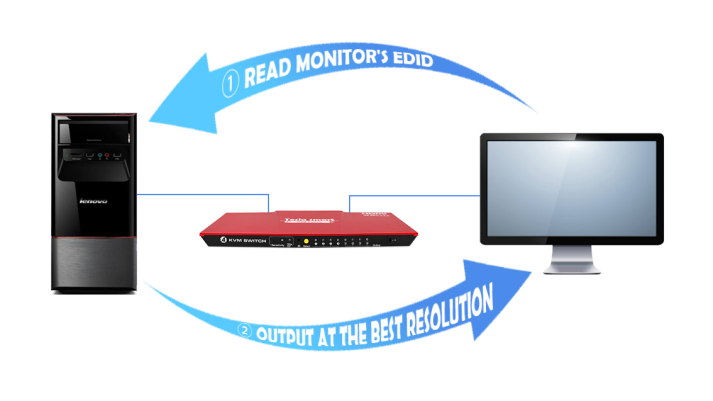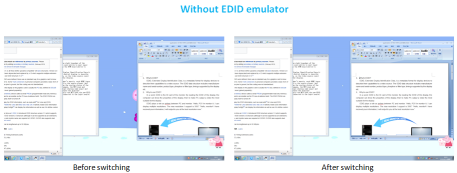EDID, Extended Display Identification Data, is a metadata format for display devices to describe their capabilities to a video source. The EDID data structure includes manufacturer name and serial number, product type, phosphor or filter type, timings supported by the display etc.
In a word, EDID is the ID card of the monitor. By reading the EDID of the display, the computer can know the properties of the display, then to make PC output a video the most suitable for the display.
When monitor is connected to PC, there will be a conversation between them, ‘Hello, PC! I’m monitor A, I can display multiple resolutions. The max resolution I support is XXX” “Hello, monitor! I have received your information, I will output to you at the best resolution now.”

If the computer is unable to get the EDID of the display, the computer can’t know which display device it is connected, then PC may output a very low resolution picture or even not output.
In terms of ordinary KVM switch, as only one of the computers that connected to KVM can be selected to connect to the display, when switching the ports of the KVM, the other computers are unable to access the display’s EDID, then the computers change the display settings accordingly, which will cause a problem that after users set the window position, it will return to original position the next time it switches to current channel.
In Tesla smart's KVM switch, we add EDID emulators in each input port, so while switching the input ports, no matter the computer is current active selected or not, the computer still can always get correct EDID. This keeps the display settings of the computer would not be changed while switching.







